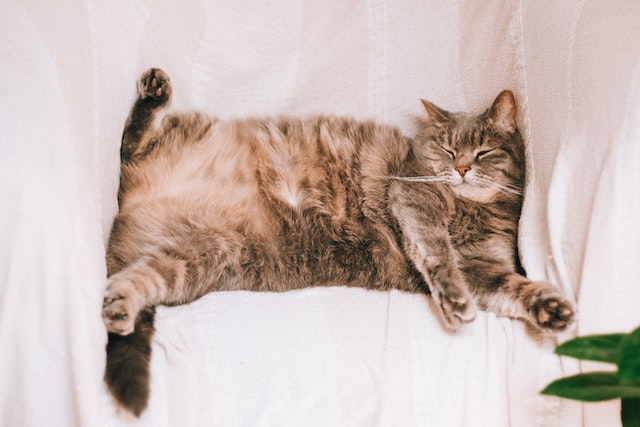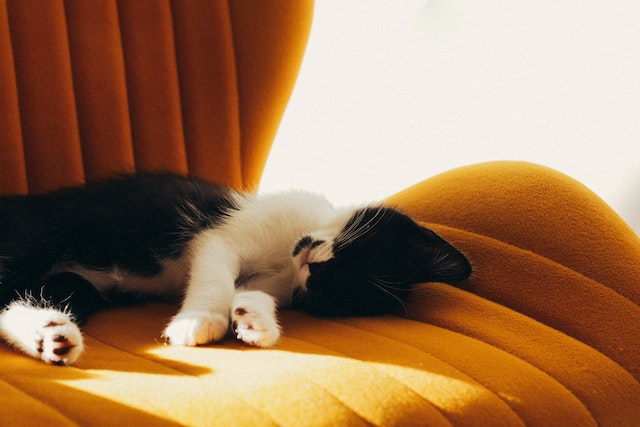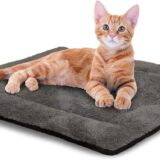Welcome to “Unveiling the Mysterious World of Cats: Fascinating Facts and Behaviors Explained.” Cats have captivated us with their enigmatic charm and independent nature for centuries. These furry companions exhibit a wide range of intriguing behaviors and possess unique qualities that continue to fascinate and puzzle us. In this blog series, we will embark on a journey into the mysterious world of cats, delving into their captivating behaviors, exploring their instincts, and uncovering the secrets behind their mysterious ways.
Join us as we unravel the mysteries, shed light on their fascinating facts, and deepen our understanding of these mesmerizing creatures. Whether you’re a seasoned cat owner, a feline enthusiast, or simply curious about the enigma of cats, this series aims to provide you with valuable insights and knowledge that will enhance your bond with these extraordinary animals. Get ready to embark on an adventure that will unveil the secrets and wonders of the mysterious world of cats.

Unveiling the Mysterious World of Cats
When it comes to expressing the word “cats” in Spanish, the appropriate term is “gatos.” Spanish is a wonderfully diverse and widely spoken language that spans across various countries and cultures. As such, learning basic vocabulary related to pets and animals can be invaluable for effective communication, whether you’re interacting with Spanish speakers or exploring Spanish-speaking regions.
The term “gatos” serves as the plural form of the word “cat” in Spanish. In this context, it specifically refers to multiple cats, acknowledging their presence as a group or collective. It is important to note that in Spanish, nouns are assigned a gender, with “gatos” representing the plural form of the masculine noun “gato.” Conversely, the plural form of the feminine noun “gata” is “gatas,” specifically used to refer to multiple female cats.
Understanding how to express “cats” in Spanish opens up a new realm of conversation and enables you to engage with others when discussing these beloved feline creatures. Whether you’re having a casual chat about pets, seeking advice from Spanish-speaking cat owners, or simply expressing your love for these fascinating animals, the term “gatos” allows you to confidently communicate your thoughts and observations.
By embracing the linguistic nuances and expanding your vocabulary, you not only enhance your language skills but also gain a deeper appreciation for cultural diversity. So, the next time you find yourself conversing about cats in Spanish, remember to incorporate the term “gatos” into your discussions, immersing yourself in the rich tapestry of the Spanish language and connecting with others who share a passion for these charismatic and enigmatic creatures.
How Much is a Savannah Cat
Savannah cats are a crossbreed between a domestic cat and a serval, a wild African cat. This unique hybridization results in a cat with distinctive and exotic features. Due to their rarity and desirability, Savannah cats are generally more expensive compared to traditional domestic cat breeds. On average, prices for Savannah cats can range from several hundred dollars to several thousand dollars. F1 Savannah cats, which have a higher percentage of serval ancestry, tend to be the most expensive. The subsequent generations, such as F2, F3, and so on, are usually less costly.
It’s important to note that the purchase price of a Savannah cat is not the only expense to consider. These cats may require special care, such as a spacious environment, a high-quality diet, and regular veterinary check-ups, which can add to the overall cost of owning a Savannah cat. When considering purchasing a Savannah cat, it is essential to research reputable breeders who prioritize the health and well-being of their cats. Additionally, familiarize yourself with local regulations and restrictions regarding ownership, as some jurisdictions may have specific requirements for owning hybrid cat breeds.
How Long Can a Cat Go Without Water
Cats, like all living beings, require water to survive and maintain their overall health. While the exact duration a cat can go without water varies depending on several factors, it is generally advised not to let a cat go without water for more than 24-48 hours. Water is vital for cats as it helps regulate body temperature, aids in digestion, promotes kidney function, and facilitates various metabolic processes. Cats primarily obtain water through their diet, especially if they consume wet food, which has a higher moisture content compared to dry kibble.
However, even with a moisture-rich diet, cats still need access to fresh water to meet their hydration needs. If a cat is deprived of water for an extended period, dehydration can occur, leading to serious health complications. Dehydration can negatively impact a cat’s organs, digestion, and overall well-being. It’s worth noting that individual cats may have different water requirements based on factors such as age, health condition, activity level, and environmental conditions. In some cases, certain medical conditions or medications may increase a cat’s water intake needs.
To ensure your cat remains adequately hydrated, always provide them with clean and fresh water. Regularly check their water bowl to ensure it is filled and consider providing multiple water sources throughout your home. Some cats may prefer running water, so offering a cat fountain or periodically running a faucet can encourage them to drink more. If you notice any signs of dehydration in your cat, such as dry gums, sunken eyes, loss of appetite, or lethargy, it is important to consult with a veterinarian promptly. They can provide guidance on maintaining proper hydration and address any underlying health concerns.


How to Keep Cats Off Furniture
Keeping cats off furniture can be a challenge, but there are strategies you can employ to discourage this behavior. One approach is to provide alternative scratching surfaces, such as scratching posts or boards, near the furniture they target. Encourage your cats to use these alternatives and reward them when they do. Additionally, you can use deterrents like double-sided tape, aluminum foil, or plastic mats on the furniture. Cats dislike the textures and are less likely to jump on them.
Another option is to make the furniture unappealing by covering it with materials cats find unpleasant, such as plastic or a vinyl carpet runner with the spikes facing up. Creating comfortable cat spaces with cozy beds or designated furniture can also entice them away from the forbidden furniture. Positive reinforcement is essential in training, so reward your cats when they choose appropriate areas.
Consider using physical barriers like baby gates or furniture covers to block access to certain areas. Providing mental and physical stimulation through play sessions and interactive toys can also reduce unwanted behavior. Regularly trimming their nails can lessen the desire to scratch furniture. With consistency and patience, you can teach your cats to stay off furniture and redirect their behavior to more appropriate areas
Why is My Cat Meowing So Much
Excessive meowing in cats can be a cause for concern and may have various underlying reasons. One common explanation is that your cat is trying to communicate with you. Meowing can be their way of seeking attention, whether it’s for food, playtime, or simply wanting your presence. Paying attention to the context and accompanying behaviors can help you understand the specific message your cat is trying to convey.
Another possible reason for excessive meowing is hunger or thirst. Cats may vocalize persistently when they’re in need of nourishment or hydration. Ensuring that your cat has a consistent feeding schedule and access to fresh water can help regulate their mealtimes and minimize excessive meowing related to hunger or thirst.
Stress or anxiety can also contribute to increased meowing in cats. Changes in the environment, the presence of new pets or people, or separation anxiety can trigger excessive vocalization. Creating a calm and secure environment for your cat, providing hiding spots, and considering anxiety-reducing techniques, such as pheromone diffusers, may help alleviate their stress and reduce excessive meowing.
Certain medical conditions can also lead to increased vocalization in cats. Pain, discomfort, or underlying health issues like hyperthyroidism can cause excessive meowing. If you notice a sudden change in your cat’s meowing behavior or suspect they may be in pain, it’s important to consult with a veterinarian for a proper examination and diagnosis.
Why Does My Cat Pee on My Bed
“Why Does My Cat Pee on My Bed” is a common concern among cat owners. This behavior can be frustrating and puzzling. There are several possible reasons why a cat may exhibit this behavior, including medical issues like urinary tract infections or bladder problems, stress or anxiety, territorial marking, or dissatisfaction with the litter box.
It’s important to identify the underlying cause and address it accordingly to prevent further incidents. Understanding your cat’s behavior and seeking veterinary advice can help you find solutions to this problem and ensure a clean and peaceful environment for both you and your feline companion.
Why Do Cats Loaf
Cats “loaf” by sitting in a position where they tuck their paws underneath their body and appear to be in a loaf-like shape. This behavior is commonly observed in cats and has a few possible explanations. One reason is that it allows them to conserve body heat by minimizing the amount of exposed surface area. By curling up into a compact position, cats can retain their body warmth more efficiently.
Another reason is that it helps them feel secure and relaxed. Loafing is often seen when cats are at ease and comfortable in their surroundings. It allows them to rest while still being alert to their surroundings. Additionally, it could be a way for cats to protect their vital organs. By keeping their paws tucked in and their body compact, they create a defensive posture. Overall, loafing is a natural and instinctive behavior for cats that serves multiple purposes, including warmth, relaxation, and self-protection.
Why is My Cat Staring at Me
When your cat stares at you, it can be intriguing and leave you wondering about the reason behind this behavior. Cats have their unique ways of communicating, and prolonged eye contact can hold various meanings. One possibility is that your cat is showing affection and bonding with you.
Maintaining eye contact is a way for them to express trust and a desire for a deeper connection. It can be a sign of their love for you. Another reason for the stare could be curiosity and observation. Cats are naturally curious creatures, and they may be observing your actions or investigating something that has caught their attention. They rely on visual cues to understand their environment better.
Additionally, your cat may be seeking attention or interaction. By locking eyes with you, they are trying to grab your attention and communicate their needs or initiate playtime and affection. Eye contact is an important part of their communication repertoire. It’s essential to consider your cat’s overall body language and the context to interpret their intentions accurately. If the stare persists or is accompanied by unusual behavior, consulting with a veterinarian or a feline behavior specialist can provide further insights into your cat’s behavior and needs.


Why is My Cat Limping
If you notice that your cat is limping, it’s important to investigate the underlying cause and seek appropriate veterinary care. Limping in cats can be indicative of various issues, and understanding the possible reasons can help determine the best course of action. One common cause is injury, which could result from falls, accidents, or altercations with other animals. Limping can occur due to sprained joints, muscle strains, fractures, or wounds. Assess your cat’s leg carefully for any visible signs of injury, swelling, or pain. Another possible cause is arthritis, especially in older cats.
Arthritis can lead to joint pain and stiffness, causing limping, particularly after periods of rest or activity. Infections in the paw pad or between the toes can also cause discomfort and limping, often accompanied by excessive licking or chewing. Foreign objects, such as thorns or splinters, lodged in the paw can likewise result in limping. Additionally, muscle or ligament damage from strenuous activity or sudden movements may lead to limping and signs of pain.
In rarer cases, limping can be a symptom of bone diseases or cancerous tumors affecting the bones. They will conduct a comprehensive examination and may recommend X-rays or other diagnostic tests. Treatment options may include pain medication, rest, physical therapy, or surgery, depending on the underlying cause. Timely veterinary attention can alleviate your cat’s discomfort and promote a speedy recovery.
Why Do Cats Scream When Mating
During the mating process, it is not uncommon for female cats to emit loud and piercing vocalizations that can be described as screams. These screams serve various purposes and are a natural part of the mating behavior of cats. One reason for these vocalizations is to attract male cats. Female cats in heat vocalize loudly to signal their fertility and attract potential mates.
The screams act as a powerful call to males in the vicinity. Additionally, the screams during mating serve as a means of communication and courtship between the male and female cats. They help establish and maintain the mating ritual, ensuring both cats are ready and in sync. The screams can also indicate the female’s submission to the male, showing acceptance of his advances.
However, it’s important to note that mating can be uncomfortable or even painful for female cats due to the male’s barbed reproductive organ. The screams may also be a response to the physical sensations involved. It’s crucial to understand that these vocalizations are a normal part of feline reproductive behavior. If you have concerns about your cat’s behavior during mating or if the vocalizations seem excessive or accompanied by signs of distress, it is recommended to consult with a veterinarian for guidance and to ensure your cat’s reproductive health is in order.


Why Do Cats Sleep at Your Feet
Cats often choose to sleep at your feet for various reasons. One explanation is that your feet provide a comfortable and warm spot for them to curl up and rest. Cats are naturally drawn to areas that radiate warmth, and your feet, especially when covered by blankets or tucked under the covers, can offer a cozy sleeping spot. Additionally, sleeping at your feet can provide a sense of security and bonding for your cat.
Proximity to their owners allows them to feel safe and connected, while still maintaining a certain level of personal space. Your feet also carry your scent, which is comforting and familiar to your cat. By sleeping at your feet, they can surround themselves with your scent, creating a soothing and reassuring environment. Lastly, it’s worth noting that cats have individual sleeping preferences, just like humans. Some cats simply find sleeping at your feet to be comfortable and enjoyable. Embrace this behavior as a sign of your cat’s trust, affection, and desire to be close to you.
Why Does My Cat Hug My Arm and Bite Me
When your cat hugs your arm and then proceeds to bite you, it can be a puzzling behavior that leaves you wondering about its underlying reasons. Firstly, it could be a sign of playfulness. Cats often engage in interactive play using their paws and mouths, mimicking hunting behaviors. Hugging your arm and gentle biting may be their way of initiating play and having fun.
Another possibility is that your cat may become overstimulated. Cats have a threshold for stimulation, and they may express their discomfort or overexcitement through biting. While they may initially enjoy the physical contact and hugging, it can become overwhelming for them, leading to a bite as a way of setting boundaries or seeking some personal space.
Attention-seeking could also be a motivation behind this behavior. Your cat may be trying to get your attention or initiate interaction by hugging your arm and biting. It could be their way of signaling that they want to play or receive affection. However, if the biting becomes excessive or painful, it’s important to redirect their behavior and establish appropriate boundaries.
In some cases, the hugging and biting may be a manifestation of redirected aggression. If your cat is feeling stressed or frustrated due to the presence of other cats or animals in the environment, they may express their frustration by hugging your arm and biting. Identifying and addressing the source of their stress can help alleviate this behavior. Observing your cat’s overall body language and considering the context in which the behavior occurs can provide insights into their intentions.
Conclusion
In conclusion, exploring the mysterious world of cats reveals a multitude of fascinating facts and behaviors that shed light on their captivating nature. Cats possess unique characteristics and exhibit behaviors that continue to pique our curiosity. From their mysterious nocturnal activities to their intricate communication methods, cats never fail to surprise and intrigue us.
Throughout this blog, we have delved into various aspects of cats’ lives, uncovering the reasons behind their behaviors, unraveling their secrets, and providing insights into their world. We have explored topics such as their sleeping habits, vocalizations, mating behaviors, and even their penchant for loafing and staring. By understanding these aspects, we can deepen our connection with our feline companions and ensure their well-being.
As we navigate the mysterious world of cats, it becomes apparent that their behaviors are driven by a combination of instinct, communication, and individual personality traits. Each cat is unique, with its own quirks and preferences, adding to the enigma that surrounds these fascinating creatures.






